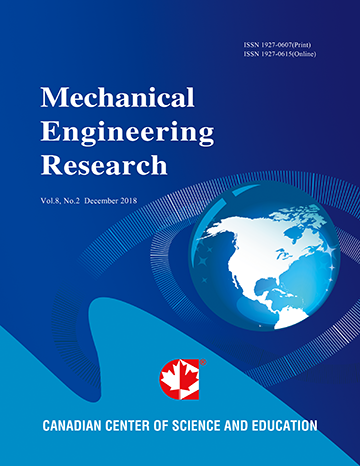Design of Elastic Screw Fasteners under Tensile Load
- Edward. E. Osakue
- Lucky Anetor
Abstract
This paper presents an equivalent stress approach in the design of screw fasteners under tensile load. Design equations are formulated for sizing and verifying screw fastener selection. It considers axial tensile, direct shear, bending, and torsional stresses and combines them as appropriate into equivalent or effective stresses. The equivalent or effective stresses are compared with screw fastener material strength capabilities such as proof, yield, fatigue, and tensile strengths for failure assessment. Design factors are derived for assessing design adequacy the screw fastener. For elastic screw fasteners, these stresses must each be in the elastic range for the screw material. When the load is removed, elastic screw fasteners regain their original size and shape, behaving like springs. Two illustrative design examples are used to demonstrate both design verification and sizing tasks. Design verification was performed in the first example and the static yield design factors are found to be 0.77 and 0.68 for the preload and service load, respectively. These values are less than unity, representing a case of under-design in static yield failure modes. Without changing the specification of the screw fastener, the preload tension was reduced by 62.76%, and the static yield design factors changed to 1.42 and 1.12 for the preload and service load, respectively. This shows that the under-design condition resulted from high preload tension. When the screw pitch is changed from coarse to fine series, the design factors are worse off in fatigue stress resistance but indicated some improvement in static stress resistance. This suggests that fine pitch threads is not better than coarse pitch threads in fatigue stress capacity when direct shear and bending stresses are considered in Example 1. Both design sizing and verification are performed in Example 2. Design sizing suggests a screw fastener ( ) of slightly larger size than the previous solution ( ). Design verification indicates the previous solution and new solution has a minimum static yield design factor of 0.93 and 1.09, respectively for the service load. This suggests that the screw fastener of the previous solution may yield in service, if implemented. The new solution has a higher design factor in this failure mode and presents less risk of failure. From the illustrative examples presented, it seems that ignoring direct and bending stresses in screw fastener design can lead to under-design in some failure modes.
- Full Text:
 PDF
PDF
- DOI:10.5539/mer.v7n1p13
Contact
- Lenna BaiEditorial Assistant
- mer@ccsenet.org
